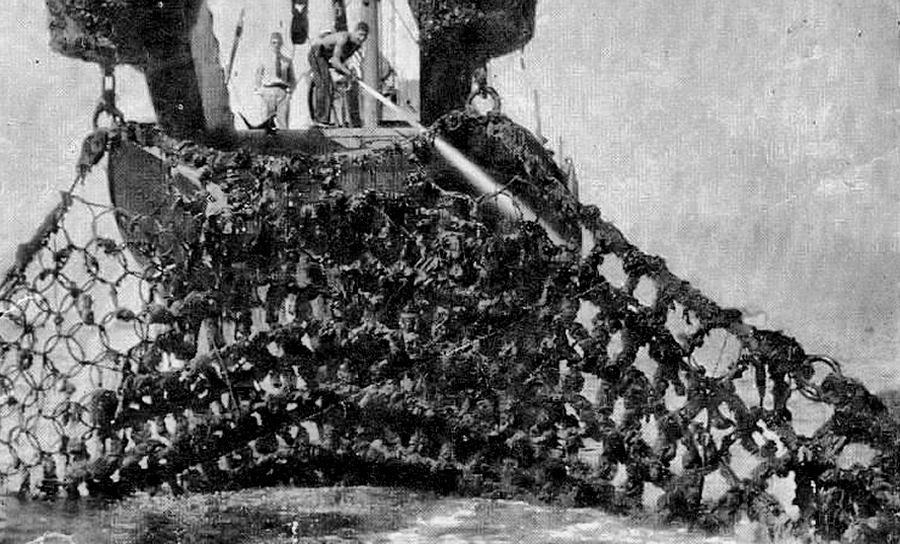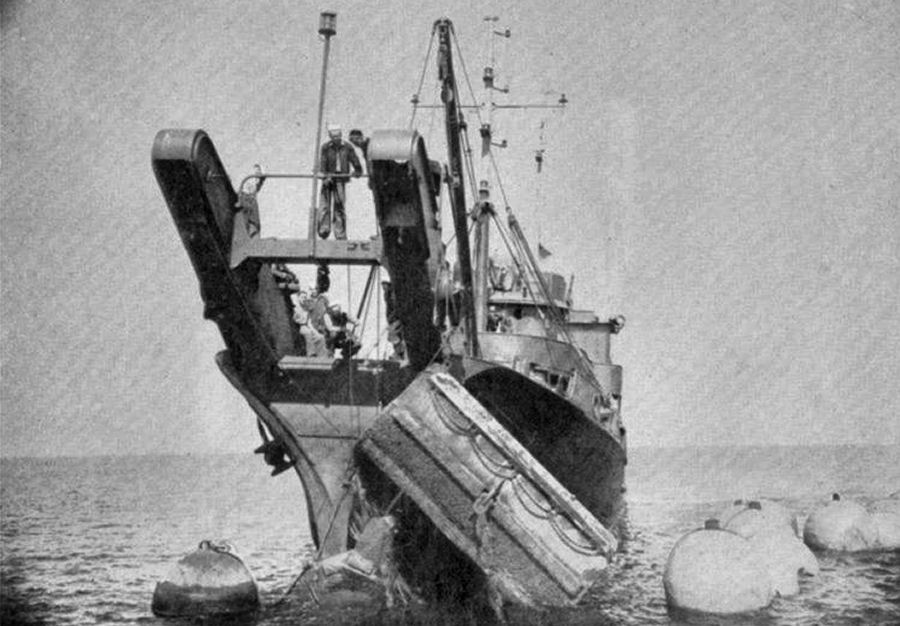| For six months after
the United States entered World War II, the coasts of Virginia and
North
Carolina were on the front line.
Five Nazi submarines were dispatched across the Atlantic to attack Allied shipping off Cape Hatteras and warships entering and leaving Hampton Roads. They also mined the mouth of the Chesapeake Bay. The success of the German operation -- which the Nazis called "Drum Beat" -- wasn't general knowledge at the time, even though debris washed ashore at Virginia Beach and along the Outer Banks. German torpedoes, deck guns and mines struck 79 ships and sank 66 of them. A total of 843 merchant seamen and naval gun crewmembers lost their lives. The defense
of
Hampton
Roads was a coordinated military operation that, early in 1942, relied
on reconnaissance by yachtsmen, harbor pilots, fishermen and civilian
pilots
who flew their own airplanes. Fishermen who didn't have radios sent
back
emergency reports by carrier pigeon. From: http://www.navsource.org/archives/09/18/1800001.htm   Observation planes and bombers flew patrol missions from Langley Field, and Navy and Coast Guard vessels went out from Norfolk. The Defense Warning Service also used radar, then in its formative stages. Antiaircraft batteries and shore guns were controlled from Fort Monroe. Submarine nets with gateways and lines of contact mines protected the harbor, and channel traffic was closely monitored. Nevertheless, an American tanker, approaching the port in thick fog, ran into an American mine and sank. The USS Roper, a four-stack destroyer built for World War I that had been called out of mothballs, picked up the soundings of a German submarine not far from Oregon Inlet a few minutes past midnight on the morning of April 14 and gave chase. The submarine, which had not submerged, fired a torpedo that passed along the Roper's port side. As soon as the Roper caught the submarine in its searchlight, it opened up with machine-gun fire and its 3-inch deck gun. Coxswain Harry Heyman scored a direct hit on the conning tower near the waterline, and the submarine went down. The Roper dropped a barrage of 11 depth charges and at dawn recovered the bodies of 29 German seamen who were identified as crewmen of U-85, one of Hitler's new 500-ton submarines. It was the first Nazi submarine to be destroyed by an American vessel in the war. From "Hampton Roads Ticket"And what we did,
we built anti-submarine nets. We'd build a net across an inlet. Ships
could
get behind it. It'd keep submarines and torpedoes from coming in. They
were made out of steel cable and chains. And, they had nets across like
out here (gestures toward the water that his property backs up to) like
about at the entrance to Hampton Roads that ran from the shore over to
the other shore with a gate that could open and let ships in and they'd
close it back up. Now submarines or anything could not get in, come
through
in on them.
From "Retired
Sailor" They have requested me most
urgently to put down a
submarine net across the entrance to the Chesapeake Bay Links: http://www.btinternet.com/~philipr/nets.htm
http://www.mariners-l.co.uk/GenBosunADMquestions.html http://www.navsource.org/archives/09/1800026.htm http://www.navsource.org/archives/09/1800001.htm http://www.navsource.org/archives/09/091800601.jpg http://www.navsource.org/archives/09/091800701.jpg http://www.navsource.org/archives/09/18083.htm Little Creek Go To Boats
|